Erwin Chemerinsky’s important new book, The Case Against the Supreme Court (Penguin, 2014), minces few words. Although he could have extended many of his comments about the High Court to lower federal courts as well, not to mention state courts, he focused on our most important and influential Court, an institution about which he has vast knowledge and with which he has much experience. This is a critique by a scholar and practitioner who has spent thirty years studying the Court, writing and teaching about the Court, and arguing on behalf of clients before the Court—and doing it all with great distinction. Chemerinsky also serves as the dean of the University of California, Irvine, School of Law, which he was involved in founding.
If you accept the premise of Chemerinsky’s work, he has not only made the case against the Court, he has done so conclusively with compelling evidence. He expresses thoughtful criticism where too few others do.
The Basis of Chemerinsky’s Core Critique
Chemerinsky writes that notwithstanding—or perhaps because of—his years of analysis of the Court, he needed to address a fundamental question: “Has the Supreme Court been a success or a failure?” His conclusion and the thesis of his book is that throughout history and today the Court has failed “at its most important tasks, at its most important moments.” He outlines those “tasks” and “moments” based on his view of the Court’s mission.
Few would disagree with his finding that “the defining characteristic” of our Constitution is the fact that it is “very difficult to alter.” He further explains that this was done intentionally by its framers “as a way of preventing tyranny of the majority, of protecting the rights of the minority from oppression by social majorities.” Rather than place these protections in a statute that could be overturned by that majority, the framers made it very difficult to change these constitutionally enshrined protections. And the “primary reason for having a Supreme Court . . . is to enforce the Constitution against the will of the majority.”
In reviewing Chemerinsky’s book for the Wall Street Journal, conservative writer Terry Eastland (a journalist with no formal legal training), acknowledges Chemerinsky’s core premises but largely dismisses them with something of a grand overstatement of his analysis, claiming:
It appears that in every case in which the rights of the minority and the right of the majority to govern are pitted against each other in a lawsuit, Mr. Chemerinsky believes that minority rights should win. He points to no case with approval in which the justices sided with the majority and against minority rights. He also never presents a hypothetical conflict in which he believes the majority should prevail. Mr. Chemerinsky does not say how he would reconcile minority rights and majority power, but his commitment to minority rights seems absolute.
With this, and attacking the book for its failure to address Roe v. Wade (1973), which is not relevant to the analysis, Eastland largely dismisses Chemerinsky’s work. Yet in doing so he only reinforces the book’s point that ideology drives this Court, not to mention its apologists, particularly of the contemporary Court under Chief Justice John Roberts.
Nonetheless, Chemerinsky seems to anticipate a Terry Eastland-type reaction to his work, and explains that expressly in the book:
My goal is to show why both liberals and conservatives should see the Court as failing relative to its core missions under the Constitution. I recognize, of course, that there is no way to exclude ideology when evaluating the Court, any more than there is a way for the justices to decide cases divorced from their own ideologies. My goal, though, is to show why those of all political views should be deeply troubled by the Supreme Court’s performance throughout American history.
An Ideologically Driven Court
Chemerinsky explains that the “broad, open-ended language of the Constitution means that decisions in important cases are products of who is on the Court” at any given time. It is the prevailing ideology of the justices—not mythical rules found in the nation’s founding document that may be gleaned by the justices—that produce the Court’s rulings. It is refreshing to have a constitutional scholar with Chemerinsky’s eminence so bluntly explain how the Court decides cases, which he does throughout this book.
In short, the High Court—if not many courts, as I see it—is driven by the ideology (read also: politics) of its justices. As Chemerinsky writes, and then chapter by chapter documents, concepts like “cruel and unusual punishment,” “equal protection,” and the reach of the Constitution’s protections, or lack thereof, depend on who is on the Court and their values.
This point is made powerfully in Chapter 7, when Chemerinsky asks: “Is the Roberts Court Really So Bad?” Based on Chererinsky’s material, I must say that it is worse than I thought, particularly the rulings regarding the political process, which Chemerinisky notes “deserve significant attention in evaluating the Supreme Court, because they affect who governs the country,” not to mention how it is governed.
More specifically, Chemerinsky focuses his attention on three highly significant holdings by the Roberts Court (as well as Bush v. Gore from the Rehnquist Court, which involved the Court in presidential elections): Citizens United v. Federal Election Commission (ruling that corporations can spend unlimited amounts of money in elections), and Shelby County v. Holder (finding a key section of the Voting Rights Act of 1965 unconstitutional). Each of these decisions was highly partisan, decided by the five conservative justices, and most beneficial to the Republican candidates and office holders—at a time when the Republican Party was grappling with the Democratic Party’s demographic and numerical advantages. These rulings appeared to be outright partisan rulings—although Chemerinsky stops short of so labeling them.
Throughout the book, Chemerinsky examines the ideological bias of the Court. This fact of life begins with the judicial selection process by presidents. And while the author wisely dismisses the suggestion to ignore the ideology of nominees for the High Court during the confirmation process (for this will never happen), he takes a real world view in acknowledging that the ideology is part of the process that the Senate must work through to keep the Court functioning. So rather than ignoring ideology, as John Roberts did during his confirmation hearing when claiming the faux position of a judge or justice acting as an umpire calling balls and strikes in a mechanical way, Chemerinsky says the Senate must face the issue squarely and openly. Chemerinsky, who has testified at confirmation hearings (as have I) is being absolutely realistic in making this assertion.
Chemerinsky’s Key Recommendation
After analyzing the Court’s failures, of which sadly there are many, Chemerinsky has a number of important, not to mention thoughtful, recommendations. None more so than his call for term limits on Supreme Court justices. He would have justices appointed for eighteen-year terms without the possibility of renewal. Thus, with nine justices on the bench, a vacancy would occur every two years. Should there be a vacancy by reason of resignation or death it would be filled by an interim appointee to complete the unfinished term. “Eighteen-year terms, with regular vacancies, should allow the Court to have both the wisdom of experienced justice and the turnover to allow fresh perspectives,” Chemerinsky writes.
The author notes that some scholars have argued such a term limit might be imposed on the High Court by congressional action, but Chemerinsky believes it would require a constitutional amendment—thus making it far less likely. He notes, however, that while unlikely, this possibility is not unrealistic. While there are few issues upon which Chemerinsky agrees with Texas Governor Rick Perry, both believe there should be term limits for the High Court. In fact, I know both Republicans and Democrats who have embraced this idea. Thus there may be common ground between the left and right on an action that could inject more balance into the ideological nature of the Court. It is unpredictable whether a Republican or Democrat might be president when terms for the justices expire, which could have something of a balancing effect.
Erwin Chemerinsky has assembled a thoughtful analysis of a failing institution that deeply affects our way of life. The Case Against the Supreme Court is no partisan screed, rather a warning to thinking persons (lawyers or non-lawyers). In reading this book, everyone will hear the canary in the mineshaft. We ignore it at our peril.









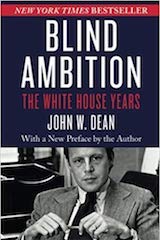
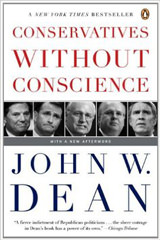

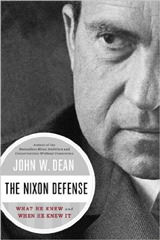
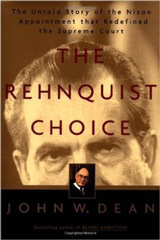
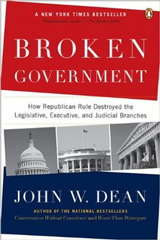
I am painfully tired of Dean’s incessant whining! His sour grapes, apparently still hanging on the vine after his being thrown under bus by Nixon, have long turned to moldy remnants, but he continues to suck on them and vomit the contents of his addled mind into the public arena. But why should I complain at all? Most of the Justia columnists are left-leaning ideologues themselves. So a column such as this is truly no surprise at all.
The Supreme Court has, to its discredit, become politicized thanks to the vehement polarization of Congress in the 20th century. Democrats don’t want to confirm Republican nominees (such as the ever-silent-during-argument Justice Thomas), and Republicans don’t want to confirm Democratic nominees (such as three of the four women who have been confirmed as Justices). Until that changes, we should not expect a different result in the High Court’s opinions.
Nevertheless, Justices Souter and Kennedy continue to confound the 5-4 division that frequently attends the Court’s decisions. So I don’t think political ideologies are solely to blame for the low public approval rating or the negative assessment Chemerinsky believes the Court may deserve.
When all things are considered, however, the American system of jurisprudence still seems mostly capable of handling criminal and civil cases expeditiously. It’s the trial attorneys and the litigants who muck things up so much.
Really thoughtless ad hominem criticism in your intro, which negates whatever else you have to say.
However in briefly scanning the rest, you managed to remind of the only rational defense I can recall of the Bush v. Gore decision. The law student in question had reached the conclusion that America had become a judicial dictatorship, and the reason he was in law school was simply so that he could become one of the dictators. I wonder whether or not he’s succeeded…
As usual, it comes down to who thinks his own ox is being gored. I think the most revealing aspect of the political corruption of the Supreme Court is their increasingly narrow interpretation of corruption itself. The firm ‘quid pro quo’ standard which calls for highly explicit deals is exactly what the SCOTUS is sure that they will never be nailed for. I certainly can’t recall the last time someone retired from the Supreme Court to take up a cushy job as a lobbyist…
Wise justices have often refused to be drawn into political decisions, especially when elections were involved. After all these years, I’m still wondering what motivated Sandra Day O’Connor… Easy to understand someone like Rehnquist, but Bush v. Gore sticks out like an extremely sore thumb in her case. Even more interesting, she actually did resign early from the court, whereas Rehnquist hung in there to the most bitter end.
It would appear to be a thoughtful and candid review of the realities of the final court in the judicial system as presented by the author.
The author of the book recognizes the process of politics in the institution. Certainly as early as Mulberry vs Madison there was a clear effort to create and extend a political and societal changing mechanism. Whether or not the Court is ahead or behind the curve ( right or wrong side of history -it does not matter) the deceisions rendered have an increasingly rapid effect on society. It is this change that creates the greatest of disturbances in the body politic. Assimilation of people, ideas or directions is always a challenge and there is no assurance of the conclusion. A minor action of any kind today has a greater and more imidiate impact. The court is no different. All of which feeds our discontent and our polarization
As the punch line in the old joke about time and our impaticence says “…and if you miss your turn in the revolving door in the morning, your whole day is shot.. “. This is not only how most of us view life but our failure to consider it, it is done at our own peril.
I’m glad that this version corrected the error found in the Justia email newsletter, where Bush v. Gore is attributed to the Roberts court.